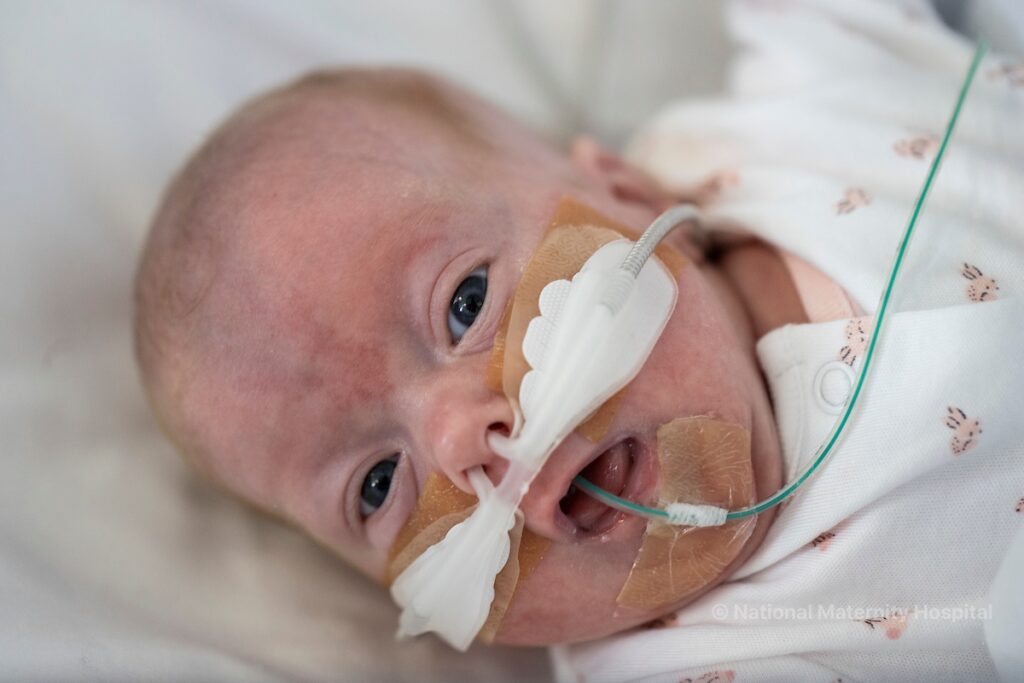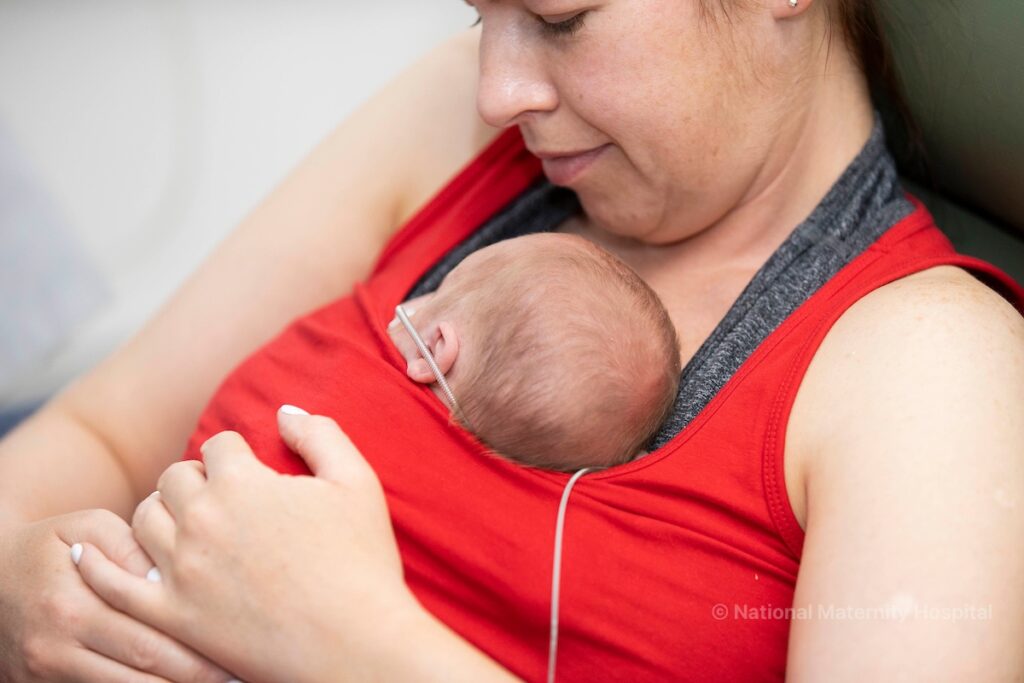In the NICU - Feeding
Tube feeding
At the start, some babies may not be mature or well enough to feed by mouth (orally). If so, a feeding tube can be used instead.
A feeding tube is a soft narrow tube, which can pass through your baby’s nose or mouth into their stomach. This tube will be used to give feeds until your baby is ready for normal feeding by mouth.
First feeds may be small, but the volume will increase gradually over time to meet your baby’s needs.
There is lots you can do for your baby when tube feeding and to help them prepare for oral feeds later.

Baby with a feeding tube (Orogastric)
Did You Know?
Staff are available to guide you throughout – just ask.

- Start by being with your baby during feeds. Your voice and touch will provide comfort and reassurance to your baby. Talk and sing to your baby and let them know when it is feeding time. It may also suit to hold the syringe containing the feed as it flows through the tube.
- Offer opportunities for non-nutritive sucking (NNS), for example sucking on your breast after you have expressed or on a soother when your baby is able. This helps to strengthen the muscles needed for feeding and get them ready for the main event! As your baby matures, you can offer tastes of milk at this time, for example drops of breast milk at your breast or a soother dipped in milk (dummy dips). Doing this also helps your baby associate tasting milk with feeding time.
- Hold your baby during feeds if they are able. Holding your baby skin-to-skin with kangaroo care can help your milk supply and encourage your baby’s feeding instincts. This also offers your baby the opportunity to nuzzle and root and smell your breast – all part of the process of learning to breastfeed.
- Watch your baby during feeds. If they show cues of discomfort of stress, slow down the feeds by lowering the feeding syringe or pause to give your baby a rest.
- Express your milk to give through the feeding tube. You can also use this milk for mouth care. Expressing is also important to optimise your supply for breastfeeding later.
If you cannot be with your baby during tube feeds, staff will do the activities to help your baby instead.


